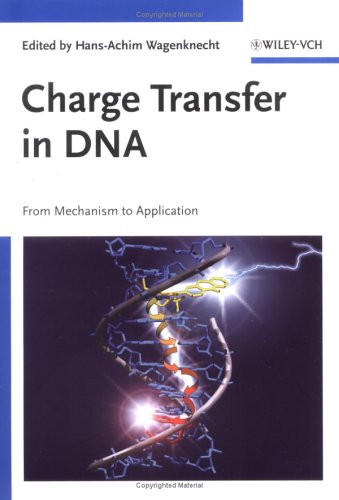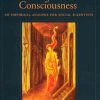Charge Transfer in DNA From Mechanism to Application 1st Edition by Hans Achim Wagenknecht, Harry Gray ISBN 3527310851 9783527310852
$50.00 Original price was: $50.00.$35.00Current price is: $35.00.
Charge Transfer in DNA: From Mechanism to Application 1st Edition by Hans-Achim Wagenknecht, Harry B. Gray – Ebook PDF Instant Download/Delivery: 3527310851, 978-3527310852
Full download Charge Transfer in DNA: From Mechanism to Application 1st Edition after payment
Product details:
ISBN 10: 3527310851
ISBN 13: 978-3527310852
Author: Hans-Achim Wagenknecht, Harry B. Gray
Charge Transfer in DNA: From Mechanism to Application 1st Edition: The past few years have witnessed intense research in this fascinating field as well as many controversial discussions. Now the time is ripe for a comprehensive book covering not only theoretical aspects, but also such mechanistic topics as principles and mechanisms of photoinduced charge injection, transport and trapping in DNA, sequence-dependent DNA dynamics, spectroscopic investigations of hole transport and much more.
From the contents:
* Principles and Mechanisms of Photoinduced Charge Injection, Transport and Trapping in DNA
* Sequence-Dependent DNA Dynamics: The Regulator of DNA-Mediated Charge Transport
* Excess Electron Transfer in DNA Probed with Flavin and Thymine Dimer Modified Oligonucleotides
* Dynamics of Photoinitiated Hole and Electron Injection in Duplex DNA
* Spectroscopic Investigation of Oxidative Hole Transfer via Adenine Hopping in DNA
* Chemical Probing of Reductive Electron Transfer in DNA
* Chemical Approach for Modulating Hole Transport in DNA
* Spectroscopic Investigation of Charge Transfer in DNA
* Spectroscopic Probing of Ultrafast Structural Relaxation and Electron Transfer Dynamics in DNA
Edited by Hans-Achim Wagenknecht, and written by renowned international authors, this book provides an excellent overview with high quality contributions, making it a “must-have” for everyone working in the field.
Charge Transfer in DNA: From Mechanism to Application 1st Edition Table of contents:
1 Principles and Mechanisms of Photoinduced Charge Injection, Transport, and Trapping in DNA 1
Hans-Achim Wagenknecht
1.1 Introduction 1
1.2 Synthetic DNA-Donor-Acceptor Systems 2
1.3 Photoinduced Oxidative Hole Transfer vs. Reductive Electron Transfer in DNA 3
1.4 Hole Transfer and Hole Hopping in DNA 4
1.4.1 Spectroscopic Studies and Mechanisms of Hole Transfer in DNA 4
1.4.2 Biochemical and Chemical Hole Trapping in DNA 12
1.4.3 Modulation of DNA-mediated Hole Transfer 13
1.5 Reductive Electron Transfer in DNA 17
1.5.1 Mechanisms of Electron Transfer in DNA 17
1.5.2 Outlook: Electron Transfer in DNA Chip Technology 21
1.6 Conclusions 23
References 23
2 Sequence-dependent DNA Dynamics: The Regulator of DNA-mediated Charge Transport 27
Melanie A. O’Neill and Jacqueline K. Barton
2.1 Introduction 27
2.2 Experimental Approaches to Studies of DNA-mediated Charge Transport Over Varied Energetic and Time Regimes 29
2.2.1 Metallointercalators, Organic Intercalators, and Modified Bases as Probes 29
2.2.1.1 Metallointercalators 31
2.2.1.2 Organic Intercalators 32
2.2.1.3 Modified Bases 32
2.2.2 Spectroscopic, Biochemical, and Electrochemical Approaches 34
2.3 Understanding the Fundamental Parameters Governing DNA-mediated Charge Transport 36
2.3.1 The Base Pair π-Stack of Double-helical DNA Regulates Charge Transport 36
2.3.1.1 Spectroscopic Investigations of Charge Transport through DNA 36
2.3.1.2 Biochemical Investigations of Long-range Oxidative Damage 40
2.3.2 The Role of the Oxidant in DNA-mediated Charge Transport: Energetics, Coupling, Lifetimes, and Back Electron Transfer 45
2.3.2.1 Rate Constants and Net Yields of Charge Injection 45
2.3.2.2 Long-range Oxidative Damage 48
2.3.3 Conformational Dynamics of the DNA Bases 50
2.3.4 Charge Delocalization and Participation of All DNA Bases 56
2.3.5 Transport of Holes Versus “Excess Electrons” 59
2.4 A Mechanistic Model for DNA-mediated Charge Transport: Beyond Superexchange and Incoherent Hopping 62
2.5 DNA-mediated Charge Transport in Biology 64
2.6 Conclusions and Outlook 67
References 68
3 Excess Electron Transfer in DNA Probed with Flavin- and Thymine Dimer-modified Oligonucleotides 77
Thomas Carell and Martin von Meltzer
3.1 Introduction 77
3.2 Excess Electron Transfer-driven DNA Repair by DNA Photolyases 78
3.3 Excess Electron Transfer in DNA 80
3.3.1 Distance Dependence 80
3.3.2 Directional Dependence 84
3.3.3 Sequence Dependence 86
3.4 The Catalytic Electron? Or, Can One Electron Repair More Than One Dimer Lesion? 87
3.5 Future Directions 89
References 89
4 Dynamics of Photoinitiated Hole and Electron Injection in Duplex DNA 93
Frederick D. Lewis and Michael R. Wasielewski
4.1 Introduction 93
4.2 DNA Hairpin Synthesis, Structure, and Energetics 94
4.2.1 Hairpin Synthesis and Structure 94
4.2.2 Electron Transfer Energetics 96
4.2.3 Electron Transfer Dynamics 98
4.3 Hole Injection 99
4.3.1 Distance Dependence 99
4.3.2 Electron Donor-Acceptor End-capped Hairpins 101
4.3.3 Variation of the Tunneling Energy Gap 102
4.3.4 Driving Force Dependence 103
4.3.5 GG and GGG as Hole Acceptors 104
4.3.6 Behavior of Contact Radical Ion Pairs 105
4.4 Hole Transport 106
4.4.1 Overcoming Charge Recombination 106
4.4.2 Hole Transport Dynamics 107
4.4.3 Hole Transport Equilibria 109
4.4.4 Hole Transport and Strand Cleavage 110
4.5 Electron Injection 110
4.5.1 Electron Injection to Neighboring Base Pairs 110
4.5.2 Electron Injection via a GG Base Pair 112
4.5.3 Electron Injection and Strand Cleavage 113
References 113
5 Spectroscopic Investigation of Oxidative Hole Transfer via Adenine Hopping in DNA 117
Kiyohiko Kawai and Tetsuro Majima
5.1 Introduction 117
5.2 Kinetics of Hole Transfer in DNA by Adenine Hopping 118
5.2.1 Pulse Radiolysis–laser Flash Photolysis of Phenothiazine-modified ODN 118
5.2.2 Hole Transfer by Superexchange and Hopping 119
5.3 Long-lived, Charge-separated State in DNA by Adenine Hopping 122
5.3.1 Kinetics of Charge Separation and Recombination Processes 122
5.3.2 Distance Dependence of Charge Separation and Recombination Processes 125
5.4 Effect of Hole Transfer on Photosensitized DNA Damage 127
5.5 Conclusions 129
References 130
6 Chemical Probing of Reductive Electron Transfer in DNA 133
Steven E. Rokita and Takeo Ito
6.1 Introduction 133
6.2 A Reaction-based Method to Characterize Excess Electron Transfer 135
6.2.1 A Chemical Probe for Excess Electron Transfer 135
6.2.2 Selection of Aromatic Amines as Photoexcited Electron Donors to DNA 137
6.3 Structural Dependence of BrU Reduction in DNA by Excess Electron Transfer 143
6.3.1 Electrons Donated by an Aromatic Amine Remain Associated with the Nucleobases of DNA 143
6.3.2 Distance, Sequence, and Directional Dependence of EET in Duplex DNA 145
6.3.3 Significance of Indirect Assays for Detecting EET 147
6.4 General Conclusions and Future Prospects 148
References149
7 Chemical Approach to Modulating Hole Transport Through DNA 153
Chikara Dohno and Isao Saito
7.1 Introduction 153
7.2 Hole-injection Systems 154
7.3 Modulation of Hole Transport Efficiency 155
7.3.1 Modulation of Hole Transport Efficiency by Artificial Bases 155
7.3.1.1 Ionization Potential of Bridged Bases 155
7.3.1.2 Enhanced Base Stacking 158
7.3.2 Suppression of Hole Transport 158
7.3.2.1 Suppression of Hole Transport by BamH I Binding 159
7.4 Modulation of Hole Trapping 162
7.4.1 Hole Trapping by Guanine-rich Sequences 162
7.4.2 Hole Trapping by Modified Bases 164
7.4.3 Kinetic Hole-trapping Bases 166
7.4.4 Stable Bases Against Oxidative Degradation 170
7.5 Conclusions 172
References 172
8 Spectroscopic Investigation of Charge Transfer in DNA 175
Vladimir Shafirovich and Nicholas E. Geacintov
8.1 Introduction 175
8.2 Two-photon Ionization of 2-Aminopurine in DNA 176
8.3 Oxidation of Guanine Residues by 2-Aminopurine Radicals in DNA 177
8.3.1 Design of 2AP Modified Duplexes 177
8.3.2 Heterogeneous Kinetics of Guanine Oxidation 177
8.3.3 Spectroscopic Monitoring of the One-electron Oxidation of Guanine at a Distance 178
8.3.4 Base Sequence Effects on the Rates of One-electron Oxidation of Guanine 181
8.3.5 Proton-coupled Electron Transfer at a Distance 183
8.4 End Products of Guanine Oxidation 185
8.4.1 Spectroscopic Monitoring of the Bimolecular G(-H). and O2. – Combination Reaction 186
8.4.2 Imidazolone is a Major End Product of G(-H). and O2. – Radical Addition 189
8.4.3 Minor Pathways Leading to 8-Oxogua Lesions 191
8.5 Concluding Remarks 192
References 193
9 Electron Transfer and Structural Dynamics in DNA 197
Hans-Achim Wagenknecht and Torsten Fiebig
9.1 Introduction 197
9.2 Pyrene-modified Nucleosides as Model Systems for Electron Transfer in DNA 199
9.2.1 Energetics of Electron vs. Hole Transfer 199
9.2.2 pH-dependent Fluorescence Quenching 201
9.2.3 The Role of Hydrogen Bonding in ET Dynamics 202
9.3 Pyrene as an Electron Injector and a Probe for Base Dynamics in DNA 204
9.3.1 Ultrafast Spectral Shift – Hydrogen-Bond Dynamics in DNA 205
9.3.2 Probing the ET Products in DNA – Dispersive Kinetics and Strand Cleavage 206
9.4 Reductive Electron Transfer in Phenothiazine-modified DNA 209
9.5 Structural Flexibility and Base Dynamics in Py≡dU-Modified DNA 210
9.5.1 Femtosecond Broadband Pump-Probe Spectroscopy 212
9.5.2 Spectral Properties, Dynamics, and Structural Information 214
9.6 Ethidium as an Artificial Base and Charge Donor in DNA 215
9.7 Conclusions and Outlook 219
People also search for Charge Transfer in DNA: From Mechanism to Application 1st Edition:
dna charge transport
charge transfer process
charge transfer definition
a charged trna first enters the ribosomal
a charged trna
Tags:
Hans Achim Wagenknecht,Harry Gray,Charge,Transfer,DNA,Mechanism,Application




